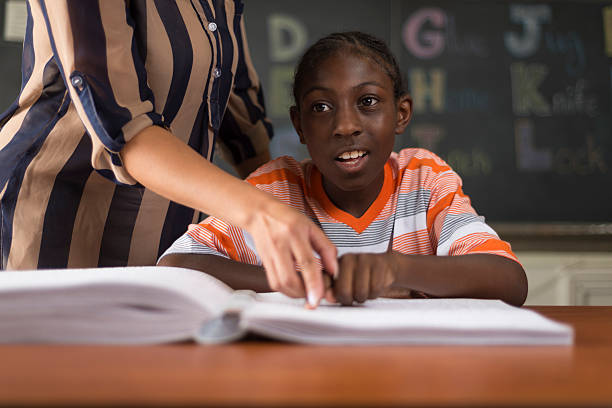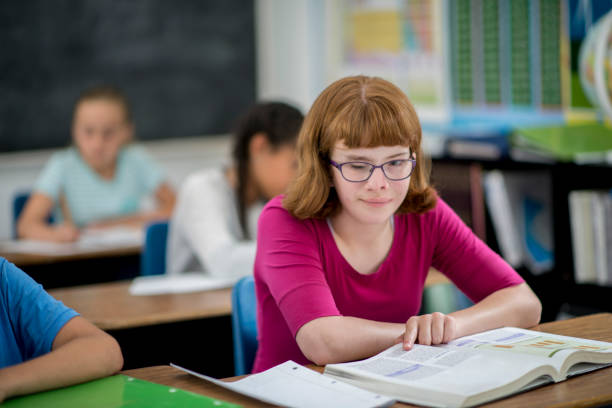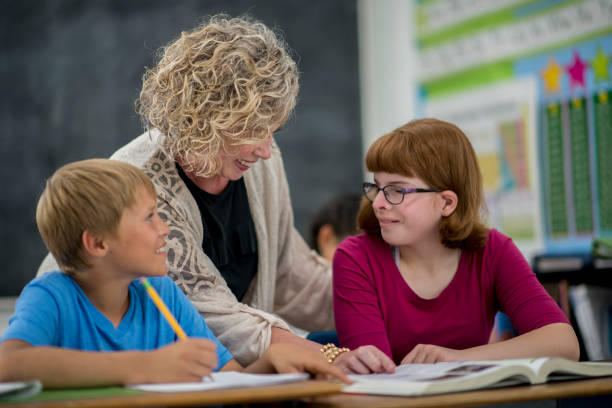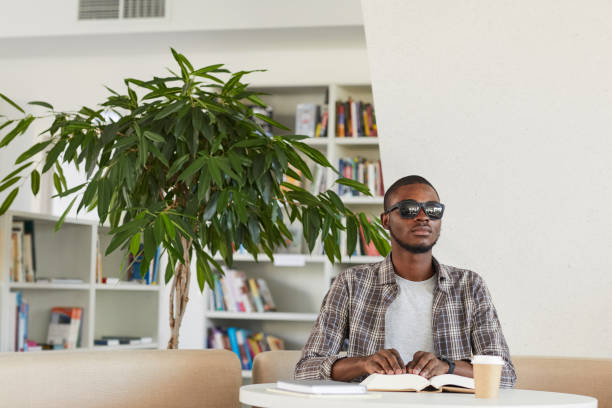Top 15 Schools for the Blind in 2023 | Requirements
Education is an absolute necessity for every child, but what happens when a youngster is blind or visually impaired? Long ago, it was considered that those with such impairments could have trouble obtaining an education. Currently, various nations are beginning to provide for everyone. We will discuss the best Schools for the Blind in the globe.
If you know someone who fits this description, you may assist them with their education by enrolling them in one of the Schools for the Blind listed in this article.
These schools employ traditional education for the benefit of the growth of the visually impaired. Let’s get right in!
How are Blind Children Taught?

Visual impairments can make it difficult for pupils to participate in physical education activities such as softball and kickball, to read at a distance, to distinguish colors, to recognize forms, and to complete routine reading and writing projects.
Frequently, low-tech devices such as book stands and bright lights are used to help vision impaired children learn to read and write.
Occasionally, the use of computer apps for typing and reading, as well as screen magnification, is also required. In other circumstances, low-vision pupils will learn to read using Braille over text or a combination of the two.
In an ideal world, both general education instructors and special education teachers instruct kids. Thus, kids with visual impairments receive a comprehensive and individualized education that suits their specific needs and contributes to their academic achievement.
What Communication Method Do the Schools for the Blind Use?

Institutions for the blind implement programs that support the growth of all types of communication. Some complete approach, which may include any or all of the following, allows these institutions to meet each student’s communication abilities where they are.
The following communication methods are utilized in these schools:
- Contact Cues
- Gestures
- Objects
- Tactile Signs
- Visual/Image Systems
- Print/Braille
- Low- and High-Tech Aids to Daily Living (AT)
- Alternative/Augmentative Communication (AAC)
- The use of speech, sign language, or tactile sign language.
What are the Requirements to Apply in Schools for the Blind?
Here are the items you must bring if you intend to apply:
- Report on Objectives
- Individualized Education Programs, or IEPs
- Individual Family Service Program (IFSP)
- Multidisciplinary Education and Group Summary Evaluation
What are the Eligibility Criteria to Apply to Schools for the Blind?

A candidate must be blind or have a visual impairment.
In addition, an adjusted visual acuity of 20/70 or below or a visual field of no more than 20 degrees in the healthy eye may suggest a visual impairment. Consider a pupil with a visual impairment that, despite rectification, negatively effects their classroom performance.
In this situation, they may still be eligible to attend OSB, despite the fact that they must still complete these prerequisites.
Additionally, the student’s eyesight impairment should be a major reason why they cannot achieve in the public school system.
List of the Best Schools for the Blind
- The Oklahoma School for the Blind
- Texas School For The Blind and Visually Impaired
- Missouri School for the Blind
- Indiana School For The Blind (ISBVI)
- Kansas State School For The Blind
- California School for the Blind
- Perkins School for the Blind
- The Maryland School for the Blind
- State-Sc School for the Blind
- Alabama Institute for the Deaf and Blind
- Louisiana School for the Visually Impaired
- Virginia School for the Deaf and the Blind
- Montana School for the Deaf and Blind
- Idaho School for the Deaf and Blind
- New York State School for the Blind, Batavia, NY
1. Oklahoma’s School for the Blind
In 1897, the Oklahoma Schools for the Blind (OSB), sometimes known as Parkview School, was established. It is a fully accredited university that offers a free, comprehensive curriculum to blind and visually impaired students from pre-kindergarten through high school.
It is a school in Muskogee, Oklahoma that offers free residential and day outreach activities and education to visually impaired kids from birth through the twelfth grade.
Instruction includes traditional academic subjects, mobility and orientation, Braille, independent living skills, and assistive technology.
Wrestling, cheerleading, and band are among the extracurricular activities offered at OSB. We have also cooperated with the Indian Capitol Technology Center for the benefit of students interested in getting instruction in the industrial arts.
OSB, the sole institution for the visually impaired in Oklahoma, was developed specifically to fulfill the needs of K–12 students who are blind or visually impaired.
2. Schools for the Blind and Visually Impaired in Texas
This institution, founded in 1856, is one of the top Schools for the Blind and visually challenged. Approximately 11,000 blind and deaf students in Texas have received instruction from the institute.
It is a statewide resource for parents and professionals working with these youngsters. Students between the ages of 6 and 21 are eligible for services at TSBVI if they are blind, deafblind, or visually impaired, as well as those with other impairments.
While preparing visually impaired pupils for the future, the school attempts to improve their educational outcomes. Through its books, online courses, in-person training, and consultations, the TSBVI promotes family interaction and education heavily.
The school is among the finest for visually impaired kids since it meets all of their academic demands as a result of these characteristics.
3. Missouri Institution for the Blind (MSB)
MSB is a Schools for the Blind and visually impaired run by the State of Missouri in St. Louis, Missouri. Since more than 150 years ago, it has offered government services to the state of Missouri from the Greater St. Louis region.
In 1860, the Missouri School was the first institution in the United States to employ the braille system. Additionally, it owned, designed, and operated one of the first braille printing presses in the country.
It is a state-run agency that serves children in St. Louis, Missouri, in grades kindergarten through twelve.
The MSB provides educational and outreach services for legally blind children in Missouri from birth to age 21 and their families. MSB is a free service administered by the Missouri Department of Elementary and Secondary Education.
4. Indiana Institution for the Blind (ISBVI)
ISBVI, founded in 1847, is a public institution. This Schools for the Blind has evolved into an institution that provides educational resources, such as a day school and residential program, outreach initiatives, and consulting services to individuals employed by local companies.
ISBVI is one of the nation’s most prestigious institutions for the blind and visually impaired based on the number of students. ISBVI is consistently recognized by peer institutions for its exceptional national practices.
ISBVI aims to make it as simple as possible for students, instructors, and families to access and utilize these resources.
The School intends to serve as a focus for research and training on best practices for teachers, students, and families. This would significantly improve the educational opportunities and quality of life for blind and visually impaired children.
ISBVI has 114 students and serves grades Pre-K through 12. Approximately 43% of the school’s students are members of a minority group. The average student-teacher ratio for the entire district is 4.
The student body is composed of 58% male students and 42% female students. The school enrolls 98% of students from low-income families. There is one full-time school counselor and 32 full-time teachers working.
5. State of Kansas Schools for the Blind (KSSB)
KSSB is another name that has achieved a prominent role in education. To accommodate the educational needs of blind and visually impaired students, the school is constantly evolving.
Established in 1867 and governed by the Kansas State Board of Education, the institution accepts students aged 3 to 21 and satisfies all educational requirements.
To prepare students for life after school, the institute offers superior training and prompt placement. By delivering superior services, KSSB has established itself as a leader in the field of education for the blind.
6. California Institute Schools for the Blind (CSB)

CSB is a public school for children in grades K–12 who are blind and is located in Fremont, California. It is near the California School for the Deaf.
The CSB offers comprehensive educational programs for children with special needs. The institute’s capacity to address all of the blind’s fundamental needs is one of its finest qualities.
The school partners with local education authorities, allowing visually impaired students to take advantage of a variety of educational opportunities and outreach efforts.
The school’s learning environment promotes uniqueness and achievement, resulting in lifelong learning that is empowered from all perspectives.
7. Perkins Institute for the Blind (PSB)
Perkins School for the Blind in Watertown, Massachusetts is the oldest school for the blind in the United States.
The facility was created as the New England Asylum for the Blind on March 2, 1829. It was afterwards called the PSB.
Perkins School for the Blind is your best option if you are looking for exceptional educational services for blind or visually impaired individuals. Due to the school’s collaboration with foreign agents of change, the school’s curriculum is more diverse.
The institute’s ever-evolving curriculum enables each student to attain his or her fullest potential through its ongoing production of courses.
Community activities and transition programs are also crucial areas of focus for the school, as they assist young adults with visual loss in preparing for the future.
8. The Maryland School for the Blind
Children and adolescents with blindness or impaired vision, as well as those with various disabilities, attend the MSB in Baltimore.
MSB, founded in 1853 and given its current name in 1868, is a private, non-profit organization that provides outreach, educational, and residential programs throughout the entire state.
This Schools for the Blind yearly educates more than 65 percent of the 2,000 blind or visually impaired children in Maryland.
Additionally, it assists blind or visually challenged pupils from infancy to age 21, including those with multiple disabilities.
In addition to traditional classroom instruction, students at the Maryland School for the Blind can master Braille or low-vision methods, orientation, and mobility skills.
In addition, the school provides assistive technology, audiology, career education, health and dental services, services for infants and toddlers, psychiatric evaluations, speech, physical, and occupational therapy, and therapeutic recreation.
9. State-Sc Institute for the Blind
The South Carolina School for the Deaf and the Blind is a school located in unincorporated Spartanburg County, South Carolina, with a Spartanburg mailing address.
In 1849, the Reverend Newton Pinckney Walker founded it as a private school for deaf children. After its founding in 1855, the School for the Blind obtained public funding in 1856.
They try to provide a high-quality environment for special education, which involves continual investments in new forms of advanced learning and creative delivery methods.
In response to increasing demand, the SC School for the Deaf and the Blind has expanded to accommodate over 250 students on its Spartanburg campus and over 1,400 children through statewide outreach projects.
The charitable foundation raises funds to supplement state and federal funding and to support outreach and on-campus programs at the institution.
10. Alabama Institute Schools for the Blind and Deaf

The Alabama Institute for the Deaf and Blind (AIDB) offers the following:
- The most comprehensive education in the world.
- Rehabilitation.
- Service program for deaf, blind, deafblind, and multi-disabled individuals of all ages.
In 1858, it was formed by a young surgeon who desired to educate his deaf brother.
The current structure houses the Helen Keller School of Alabama, which educates deaf and blind children and is named for Helen Keller, a native of Alabama.
Additionally, the Alabama Schools for the Blind , the Alabama School for the Deaf, and the Alabama School for the Deaf are located there.
AIDB currently provides annual services to more than 36,000 Alabama babies, toddlers, children, adults, and seniors with hearing and visual impairments.
11. School for the Visually Impaired in Louisiana
Louisiana Schools for the Blind (LSVI) is located on Brightside Lane in Baton Rouge, Louisiana, United States.
In 1870, the State School for the Blind was established on its current grounds. The school moved to the Government Street location in 1898 and remained there until the summer of 2009.
The state government established the Southern School for the Blind on the Southern University campus in the 1920s.
In 1978, the Southern Schools for the Blind and the State Schools for the Blind merged to form the Louisiana School for the Visually Impaired.
Over its more than 150 years as a school and a home for many of its students, LSVI’s objective has remained unchanged: to give blind and visually impaired students with the educational, employment, and social opportunities they need to reach their full potential.
12. School for the Deaf and the Blind in Virginia
The Virginia Schools for the Blind and the Deaf, established in 1839 by a legislation passed by the Virginia General Assembly and located in Staunton, Virginia, provides education to deaf and blind children.
The school accepts students between the ages of 2 and 21, and residential lodging is available for pupils over the age of 5 who live more than 35 miles (56 kilometers) away.
The Virginia School for the Deaf and the Blind provides enhanced educational opportunities for children who are deaf/hard of hearing, blind/vision impaired, deafblind, or deaf or blind with additional impairments.
They cultivate confident students, contributing citizens, and lifelong learners in a welcoming, fully accessible learning environment. Their comprehensive, state-aligned education programs support children from birth to age 21, or until they “age out” of special education services, at no expense to their families.
13. School for the Deaf and Blind in Montana
Montana Schools for the and the Blind the Deaf is a deaf and blind K-12 boarding school in Great Falls, Montana. The school admits both full-time students and those who attend traditional schools as well as MSDB students. The dormitories are reserved for students from outside of Great Falls.
The Montana School for the Deaf and the Blind (MSDB) provides substantial learning and development opportunities for deaf, hard-of-hearing, blind, visually impaired, and deafblind children from birth to age 21 throughout the state of Montana.
MSDB’s objective is to promote and provide free educational and social-emotional growth opportunities to all Montana children (ages 0 to 18) who are deaf, hard of hearing, blind, visually impaired, or deafblind.
These experiences aid pupils in discovering who they are and what they require for success.
14. School for the Deaf and Blind in Idaho
Since 1906, in accordance with Section 33-3401 of the Idaho Code, the IESDB has provided families and local school districts in Idaho with additional educational services, early invention/education, consulting services, and transition help.
“IESDB’s objective is to assist school districts and state agencies in providing accessibility, quality, and equity to students with hearing impairment through a continuum of care and placement alternatives,” as stated in the statute.
ISDB provides educational expertise to all children and their families in the state of Idaho, aged 0 to 21, who have hearing loss or visual loss, including those with multiple impairments and deafblindness.
The Idaho Schools for the Blind and the Deaf is the epicenter of academic excellence. The IESDB’s residential and outreach programs provide a variety of learning opportunities, resources, and support to help these children realize their full potential.
15. Batavia, New York, New York State Schools for the Blind

New York State Schools for the Blind (NYSSB, Braille), a K–12 public boarding school for blind pupils, is located in Batavia, New York. The State of New York is responsible for its administration.
It was established as a consequence of a bill passed by the New York State Legislature on April 27, 1865. Construction began in February 1866 and building operations completed on September 2, 1868.
The New York State Schools for the Blind offers a learning environment where children can attain their fullest potential. Each student receives a specialized education in addition to a comprehensive array of clinical and support services.
Together, primary, secondary, and special education teachers with training in visual impairments and special education develop independence and prepare children for seamless transitions into adulthood.
FAQs On Schools for the Blind
What is the name of school of blind people?
Pacelli School for the Blind is a non-governmental and non-fee paying institution, for all visually impaired persons.
What is a blind school?
Schools for the blind are often residential and serve students from throughout the state where they are located. They provide many specialized services, such as Braille and assistive technology lessons, instruction in orientation and mobility and occupational and physical therapy.
What state has the best services for blind adults?
Seattle, WA. Seattle is home to many facilities that provide services for the blind and visually impaired, such as SightConnection, Heritage for the Blind of Seattle, The Lighthouse for the Blind, and the Washington State Department of Services for the Blind.
What do blind kids do for fun?
Whether you prefer painting, pottery or textile, arts and crafts are a great way to unwind and have a bit of fun with your blind friend or family member. Get some clay and have fun making avant garde, abstract statues together, or attend a pottery making class.

